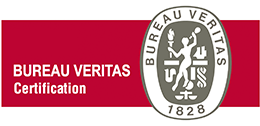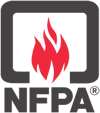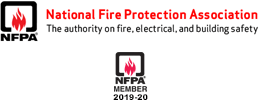What is B.L.E.V.E.?
What is B.L.E.V.E.? Boiling Liquid Expanding Vapour Explosion.
What is a Boiling Liquid Expanding Vapor explosion or the BLEVE Effect?
When a tank is exposed to sustained heat such as that from a fire, the liquid within the tank is forced to boil or vaporize resulting in an increase in pressure within the tank. To prevent this over stressing the tank is enabled with a relief device which activates when such a fire occurs thus venting any excess pressure and as the pressures decreases in the tank the valve begins to close.
However with continued heating occurs, pressure again rebuilds causing the relief valve to reopen. Where flames impinge on the tank below the liquid level, the liquid absorbs the heat allowing the tank metal to remain at a safe temperature.
But with continued relief valve operation the liquid levels drop thus exposing a greater area of the tank to the effects of the heating. With the flames impinging on the vapor space of the tank, the temperature of the tanks metal (un-cooled by liquid) rises and at some point (due to the vapor pressure within) the tank metal begins to weaken causing stretching and eventually tears within the tank.
As the tank comes apart large quantities of both liquid and vapor are released in a powerful explosion and the heat radiated is sufficient enough to ignited combustibles which can cause burns to objects that are up to 1 kilometer away from the explosion.
Tank sections that contain rapidly ignited fuel can become missiles traveling great distance and again can cause at the very least secondary burns to a humans body along with substantial damage to material goods or property´s.
It all happens very quickly with little to know warning and is known as a Boiling Liquid Expanding Vapor explosion or the BLEVE Effect!
B.L.E.V.E. explanation videos
What is B.L.E.V.E. explosion?
B.L.E.V.E. explanation safety videos
B.L.E.V.E. live explosions
TechnoKontrol Alloy Characteristics
- How it Works
- Physical Characteristics
- Technical Characteristics
- Flammable & Combustible Liquids - Hazards
- What is B.L.E.V.E. Explosion?
- TK-Global Engineering
- TK-Global Electronics
- TK-Global Environment
- TK-Global Technotelecom
- TK-QSSHE
- TK-Financing
- TK-Emergency Call Center
TechnoKontrol product and application videos
- TK Outdoor Tests Presentation - Fire Services / KNPC Kuwait
- Demonstration video
- Liquids balance
- Gas cylinders manufacturation process
- Panel at 1600°C 2 hours
- Wall at 1600°C +2 hours
TechnoKontrol Wikipedia

TechnoKontrol: 1st in Spain for own Technology patents 2013 & 2014

- Ministerio de Industria Turismo y Comercio-OEPM
Technokontrol, the number 1 corporation in Spain filing for its own technology patents, trademarks and utility patents (SPA) - OEPM 2013 The year in numbers (SPA)
TechnoKontrol has been fully verified and certified by Bureau Veritas

Certificates
- ISO 9001 - ES108784-1
- ISO 14001 - ES108782-1
- ISO 45001 - ES108783-1
- ISO 4126
- ISO 28000
- ISO 37000

NFPA-National Fire Protection Association
NFPA-Asociación Nacional de Protección contra el fuego
TechnoKontrol is a member of the NFPA

NFPA 69: Standard on Explosion Prevention Systems, 2016 Edition
Prevent deflagration explosions due to combustible dust particles, gases or vapors with NFPA 69. Combustible dust, gases and vapors produced in industrial settings can pose a significant safety hazard.NFPA 69: Standard on Explosion Prevention Systems offers definitive guidance on explosion protection and prevention systems.
ATEX - European Antiexplosive Safety Directives

- ATEX Guide: Protection in explosive atmospheres
- ATEX-EU/HAZLOZ-USA/NFPA-USA/DSEAR-UK/Explosion Directives TechnoKontrol Additional Anti-Explosion Data
- ATEX Directive in EU Directives
Dangerous Substances and Explosive Atmospheres Regulations - United Kingdom/ATEX

United Nations Economic Commission for Europe - UNECE - TechnoKontrol

- TechnoKontrol information for the UNECE BLEVE working group
Proposal transmitted by the governments of Spain and France
The European Parliament and The Council

Technokontrol's Products & Services are insured by

TK-Global Engineering - Where efficiency and reliability become a reality


More info
Should you want to receive more information, please contact us.
